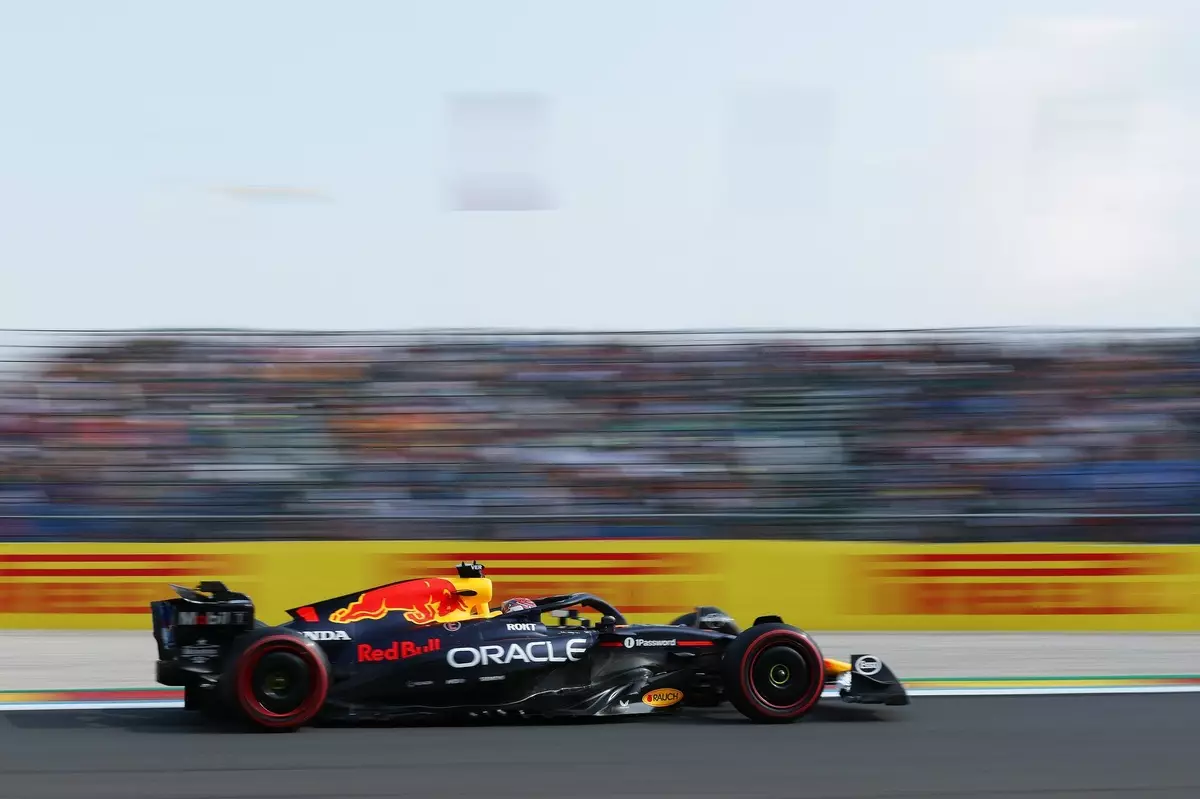The recent qualifying session at the Belgian Grand Prix laid bare the relentless pursuit of supremacy that defines Formula 1. Max Verstappen, despite his reputation for precision and aggressive pace, found himself a significant half-second adrift from Oscar Piastri’s lightning-fast lap. This gap underscored the intricate balance teams must strike between raw speed and aerodynamic efficiency. Although Red Bull’s updates promised progress, they merely accentuated the challenge of overcoming McLaren’s rising dominance. In the high-stakes world of F1, even minor lapses—like a lost four-tenths in a single sector—can mean the difference between pole position and starting grid obscurity. Verstappen’s inability to close the gap reveals the intense competitive tension and the constant evolution of technological and tactical strategies in this sport.
Technological Race: Downforce vs. Top Speed Conundrum
The persistent challenge for Red Bull was managing the delicate trade-off between downforce and straight-line speed. The team’s focus on high-speed downforce proved beneficial in certain sections but became a liability in the straights, especially in sectors one and three of Spa-Francorchamps. Verstappen’s recorded maximum top speed of 345.3 km/h was commendable but still fell short of Piastri’s 341.4 km/h in critical moments. This illustrates the complex engineering dilemma—adding downforce enhances cornering grip but hampers acceleration down the straights, while reducing it costs valuable seconds on fast stretches. Helmut Marko’s candid acknowledgment that the car was an “improvement” yet still falling short underscores how marginal gains can have outsized impacts in qualifying performance. McLaren, on the other hand, has seemingly cracked the code, delivering both speed and stability, leaving Red Bull playing catch-up despite recent upgrades.
The Rise of a New Contender: Piastri’s Impressive Surge
Oscar Piastri’s performance signals a shift in the competitive landscape. His ability to edge out Red Bull’s reigning champion by nearly half a second demonstrates a blend of raw talent and an increasingly refined car setup. Marko’s remark about Piastri’s remarkable driving prowess highlights that his achievement isn’t just about the machinery but equally about driver skill. The fact that Piastri just managed to avoid disqualification in Q2 further underscores the high stakes and precision required to advance at Spa. McLaren’s consistent demonstration of speed across all sectors is a testament to their well-balanced package, and Piastri’s performance indicates that the team is no longer content to play second fiddle. If this momentum continues into race day, it could herald a dramatic shake-up in the championship standings.
Verstappen’s Perspective: Battling Expectations and Reality
Despite the stark figures, Verstappen’s comments reveal a pragmatic mindset. His assertion that a near five-tenths deficit in a single sector diminishes the relevance of straight-line speed suggests confidence in his ability to adapt and optimize. It’s a reflection of his inner resilience—knowing that pace is multi-faceted and that qualifying is just one piece of the larger puzzle. Nonetheless, the psychological toll of such a performance cannot be overlooked. The contrast between the car’s capabilities and the driver’s performance underscores the pivotal role of confidence and mental resilience in high-pressure moments. Verstappen’s acknowledgment of the challenge points to his understanding that overcoming deficits requires not just technical adjustments but also mental fortitude.
Emerging Talent: Tsunoda’s Struggles and Future Promise
Yuki Tsunoda’s struggles further illustrate the depth of the competition. His recurring inability to reach Q3 is a clear indicator of the gap that still exists between him and the frontrunners. Notably, he wasn’t equipped with the same upgrades as Verstappen, which hampered his performance. Marko’s cautious optimism about Tsunoda’s progress hints at a season still in motion—a journey filled with potential but marked by setbacks. The frustration expressed by Tsunoda is palpable; moments like these often serve as catalysts for growth, provided the team can capitalize on the upward trend. His qualifying performances might not currently threaten the leaders, but the tireless effort and potential improvement suggest he could become a dark horse in the main race, challenging the established order.
The Reality of a Competitive Struggle
Ultimately, the Belgian GP qualifying session underscored an enduring truth in Formula 1: racing is a brutal test of engineering precision, driver skill, and strategic nuance. McLaren’s impressive speed across sectors and Piastri’s rising performance challenge Red Bull’s traditional dominance. Verstappen’s candid insights illuminate how marginal differences—tenths here and there—can be decisive. The sport’s relentless evolution pushes teams to their limits, and the teams that adapt fastest will be rewarded on race day. As tactics unfold and upgrades materialize, the current disparities hint at a deeper narrative—one where the margin for error is razor-thin, and the fight for supremacy involves more than just horsepower; it’s a battle of innovation, resilience, and strategic havoc.

